Pipers, thepepper Plants
by Alex Butova, the Witch of Herbs and Cats
Alexandra Butova is our columnist, journalist, and photographer, living in Riga, Latvia. She has has been with TopTropicals since Day One (2002), writing about magic plants, travel, and of course cats - from the CatNation she belongs to. Alex is in charge of TopTropicals.ru website.
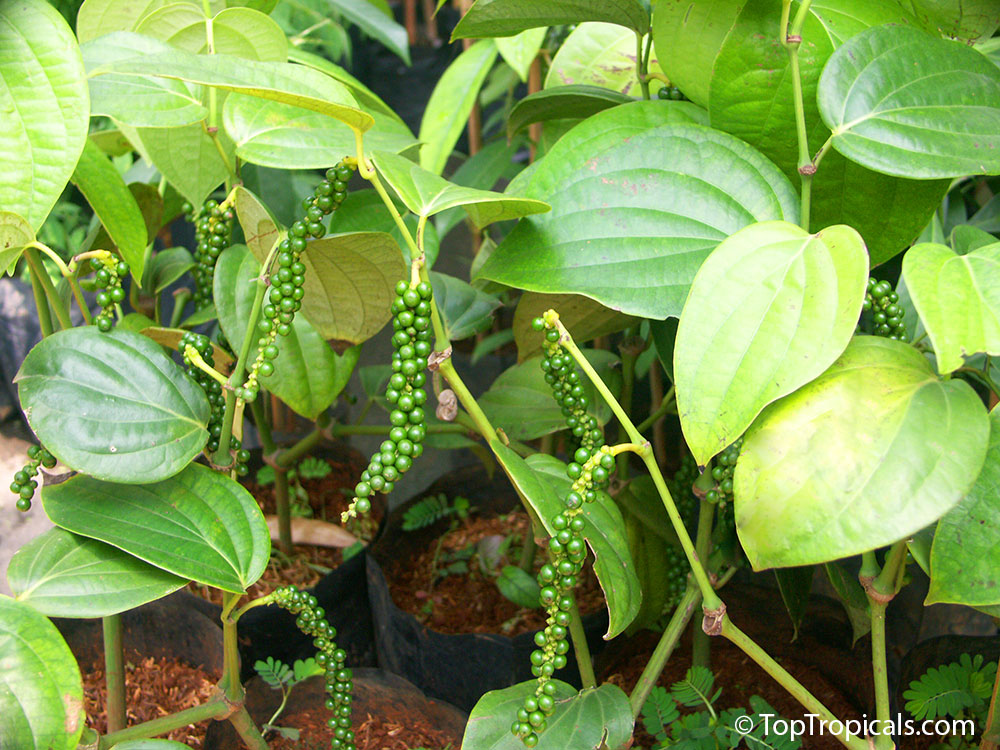
Pipers, thePepper Plants
...Who doesn't know Black Pepper? Every household has a pepper shaker, even if they are not fans of spicy food. But do you know where black pepper comes from? Certainly, from a plant. But not from the same plant that gives us Chili pepper! You will be surprised to know that Black pepper along with its other spicy relatives, belong to the same family as a Peperomia houseplant! Thescientific namePiperand the common name "Pepper" are derived from theSanskrittermpippali, denoting thelong pepper(Piper longum). In the 16th century, people began usingname pepperto also mean the unrelatedNew WorldChili pepper(genusCapsicum of family Solanaceae). Piper's spiciness is due to the chemical compoundpiperine, which is a different kind of spicy from thecapsaicincharacteristic ofChili peppers...
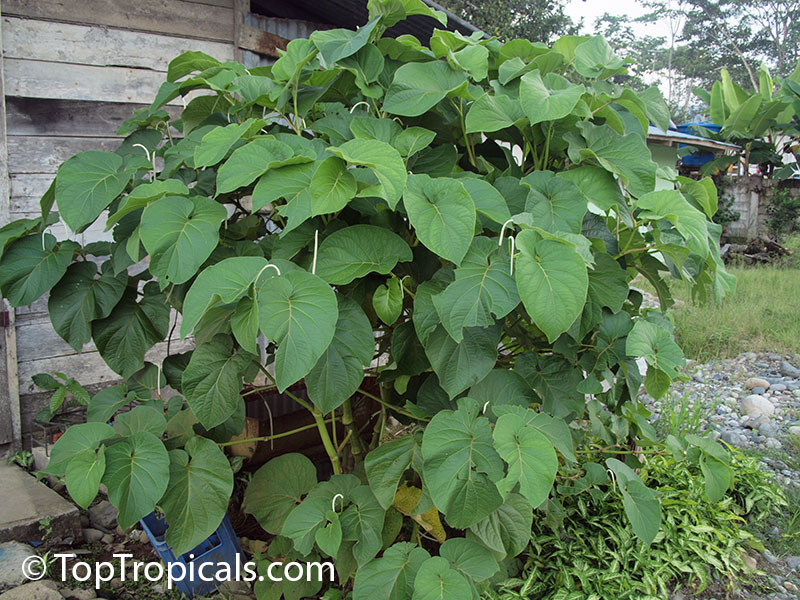
Do you like hot stuff? Mother Nature has something special for you!
Piper, the genus of pepper plantsorpepper vines, is economically and ecologically important in thefamilyPiperaceae. It contains about 1,000-2,000speciesof shrubs, herbs, andlianas, many of which are dominant species in their native habitat. Piperspecies have apantropicaldistribution, and are most commonly found in the understory of lowlandtropical forests, but can also occur in clearings and in higher elevation life zones such ascloud forests; one species (Japanese pepper,Piper Kadsura, from SouthernJapanand Southern Korea) is subtropical and can tolerate somefrost.
Mostpiperspecies are eitherherbaceousorvines; some grow asshrubsor almost as small trees.

The fruit of thepiperplant, called a Peppercorn usually round and pea-sized,mis distributed in the wild mainly bybirds, and small fruit-eatingmammals(bats . Despite the high content of chemicals that are noxious to herbivores, some haveevolvedthe ability to withstand the chemical defences of pepper plants.
The most significant human use ofpiperis not for its looks however, but ultimately for the wide range of powerfulsecondary compoundsfound particularly in the fruit. They use peppers in culinary, in medicine and… in science!
Piperis amodel genusfor research in ecology and evolutionary biology. The diversity and ecological importance of the genus makes it a strong candidate for ecological and evolutionary studies. Most research has focused on the economically important speciesPiper nigrum(Black Pepper),Piper betle (Betel Leaf), Piper sarmentosum (Lalot), Piperauritum (false Kava-Kava, or Root Beer Plant) and Pipermethysticum(Kava-Kava).
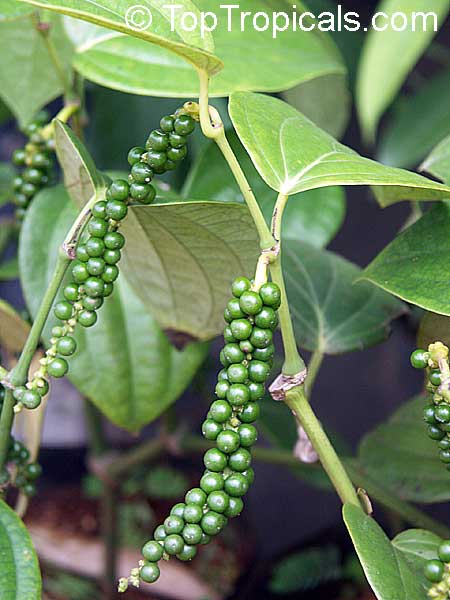
Culinary use of pepper plants is attested perhaps as early as 9,000 years ago. Peppercorn remains were found among the food refuse atspirit cave inThailand. It is likely that these plants were collected from the wild rather than deliberately grown. Use of peppercorns as pungent spice is significant on an international scale. Byclassical antiquity, there was a vigoroustrade of spicesincluding Black Pepper (Piper nigrum) fromsouth AsiatoEurope. Thebook of a recipe collection complied about 400 AD, mentions "pepper" as a spice for most main dishes.In the lateroman empire, black pepper was expensive, but was available readily enough to be used more frequently thansaltorsugar.
Read more about Piper nigrum...
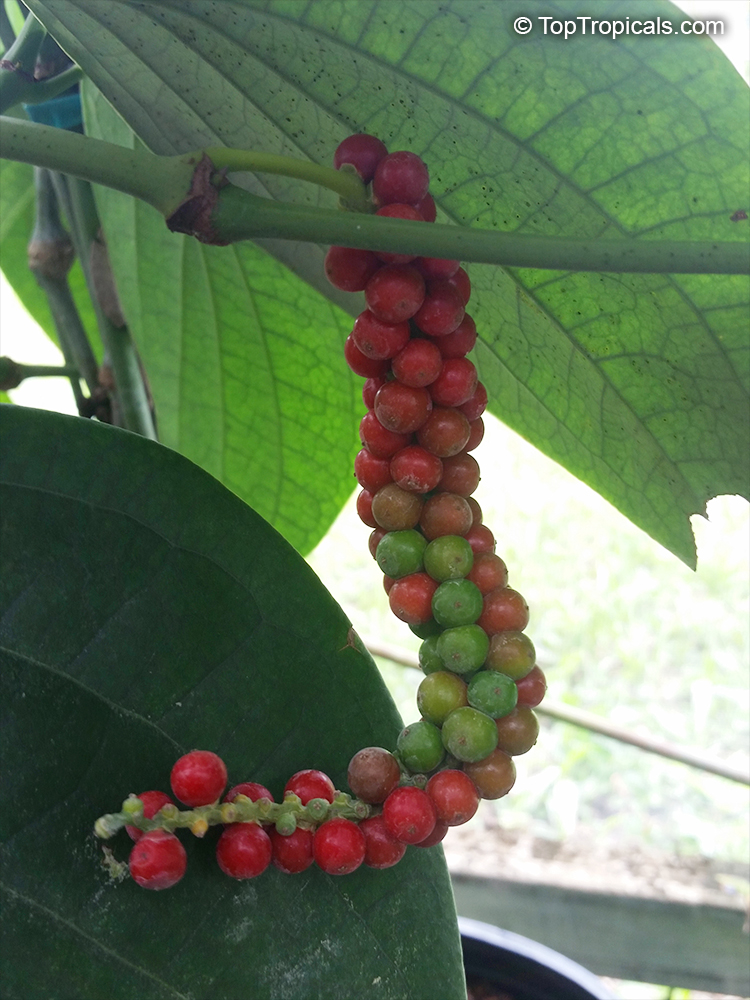
Due to the wide distribution ofpiper, the fruit of other species are also important spices, many of them internationally. Not only the seeds ofpiperare used in cooking. West African pepper leaves are used as a flavoring vegetable inlocalstews.
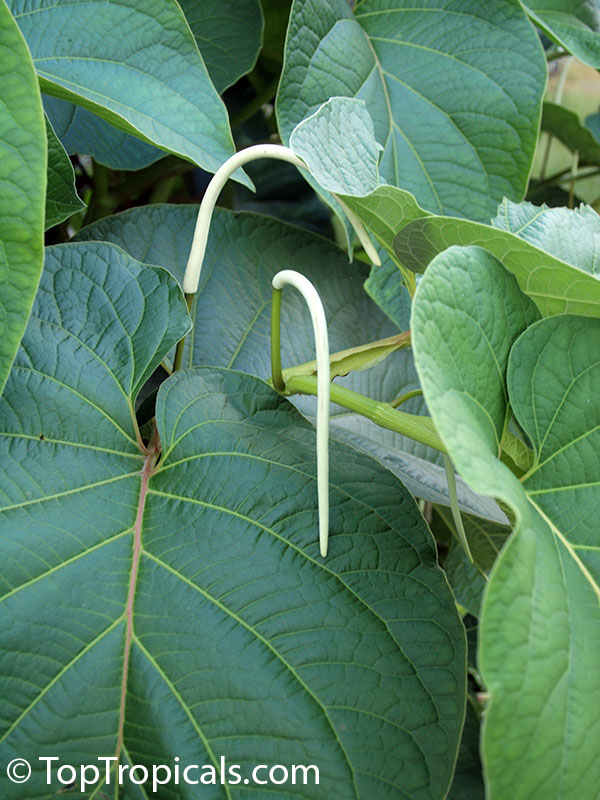
InMexican-influenced cooking Piperauritum has a variety of uses (Read more about Piper auritum). Insoutheast Asia, leaves of two species ofpiperhave major importance in cooking:Piper sarmentosum - Lolot (read more about Piper sarmentosum) is used to wrap meat for grilling or cooked as a vegetable;while the stems and roots ofPiper chabaare used as a spice.
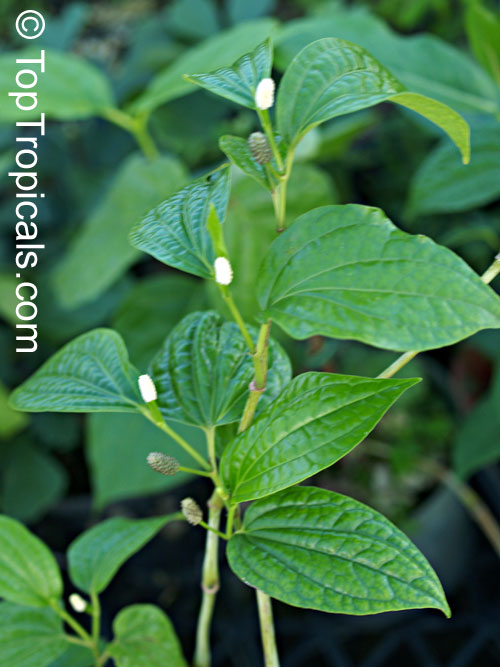
Different peppers have been used infolk medicineandherbalism; it is used to intoxicate fish which then can be easily caught.Spiked pepper Piper aduncum, often calledMatico,appears to have strong disinfectant andantibioticproperties.

Black pepper (Piper nigrum)essential oilis sometimes used in herbalism, and long pepper (Piper longum) is similarly employed inAyurveda, where it was an ingredient ofTriphala gugguluand (together with black pepper) ofTrikatupills, used forrejuvenating anddetoxifying purposes.
Onepiperspecies has gained large-scale use as astimulant.BetelLeaf (Piper betle) leaves are used to wrapbetel palmnut slices; its sap helps release the stimulating effect of these "cookies" which are widely known aspaaninIndia (Read more about Piper betle)
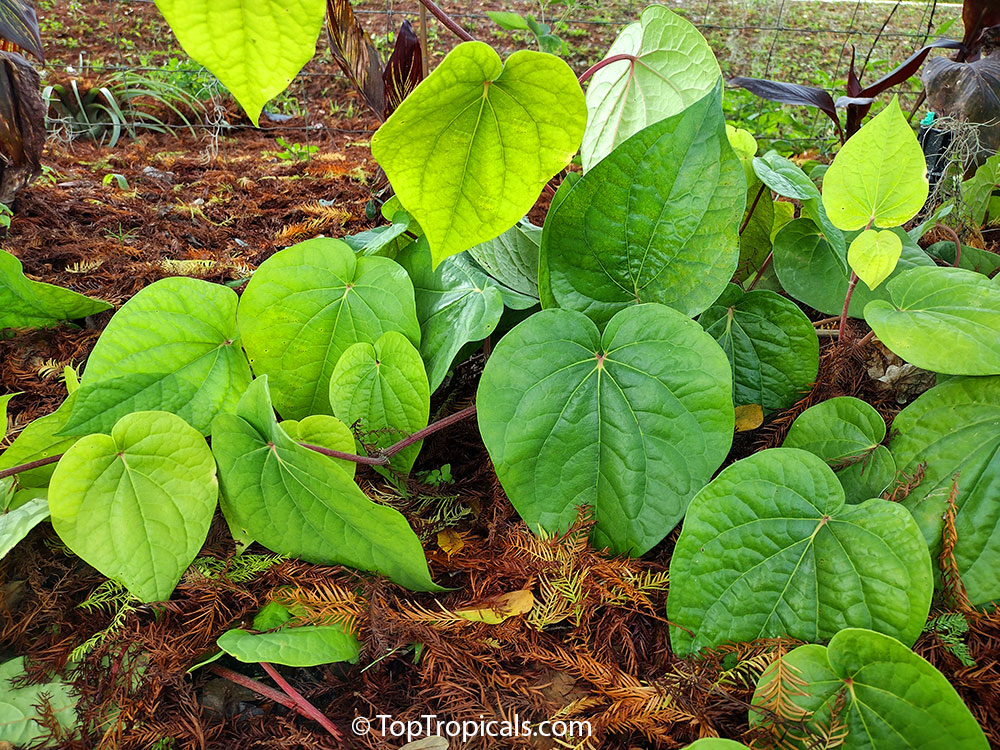
Conversely, anotherpiperspecies,kava-kava(Pipermethysticum), is used for its depressant and euphoriant effects. In thePacificregion, where it has been widely spread as acanoe plant, kava is used to produce a calming and socializing drink somewhat similar to alcohol and benzodiazapinesbut without many of the negative side effects and less of anaddictionrisk. It has also become popular elsewhere in recent decades, and is used as a medical plant.
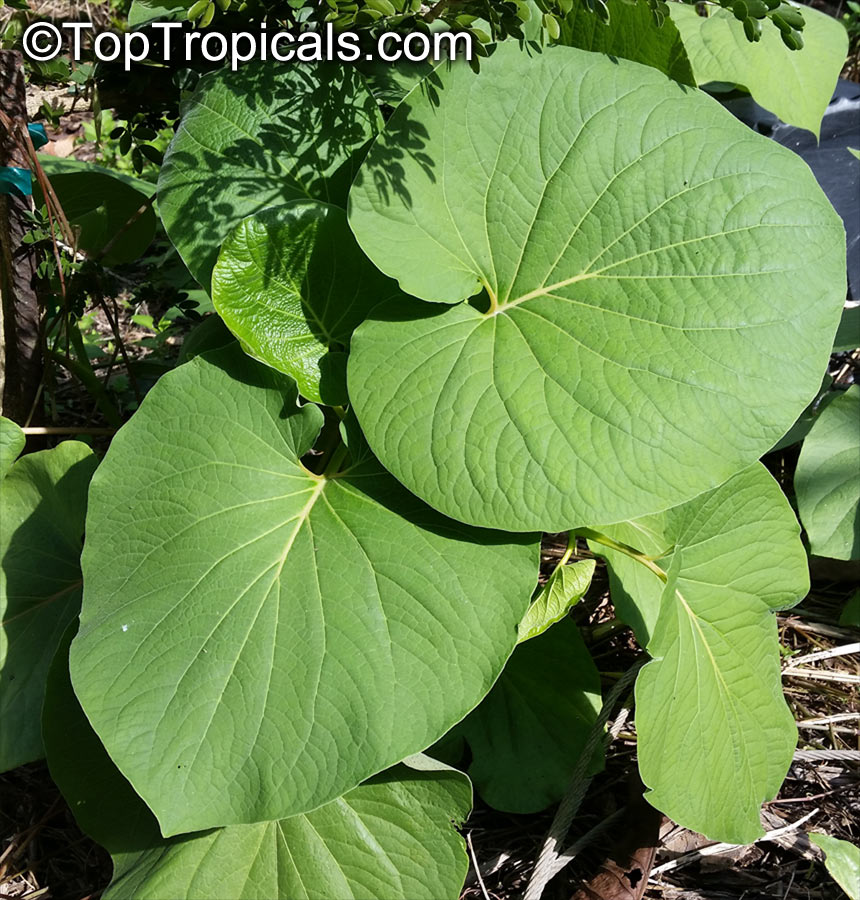
However, pills that contain parts of the whole plant have occasionally shown a strong hepatotoxic effect, which has led to the banning of kava-kava in many countries. On the other hand, the traditional preparation of the root as a calming drink appears to pose little, if any, such hazard.
Many pepper plants make goodornamentalsfor gardens insubtropicalor warmer regions and suitable as indoorpot plants.
Peppers are a plant of humid tropics requiring high rainfall and humidity. It grows successfully between temperatures between 50-100F. The ideal temperature is 75 -90F with an average of 80F. They do not like temperatures below 48F but most of them can survive a few hours of a chill night, as long as it is above freezing.
Peppers can grow in full sunexposureif watered enough but prefer a semi-shaded or shaded exposure. They enjoy humid air but don't like wet feet, so let the soil slightly dry between waterings.
Fertilize with natural SUNSHINE Robusta fertilizer, as often as with every watering, and you will have a happy, robust, and productive plant for all your culinary and medicinal needs.
In more details:
Piper nigrum - Black Pepper
As Europe moved into theearly middle ages, trade routes deteriorated and the use of pepper declined somewhat, but peppercorns, storing easily and having a high mass per volume, never ceased to be a profitable trade item. Later, wars were fought by European powers, between themselves and in complex alliances and enmities withIndian oceanstates, in part about control of the supply of spices, perhaps the mostarchetypalbeing black pepper fruit. Today, peppercorns of the three preparations (green, white and black) are one of the most widely used spices of plant origin worldwide.
Piper nigrum is native to theMalabar CoastofIndia, andis extensively cultivated there and in othertropicalregions. It is the world's most tradedspice, and is one of the most common spices added to cuisines around the world. The pepper plant is a spreading vine, rooting readily where trailing stems touch the ground. The flowers are small, produced on pendulous spikes four to 3in long at the leaf nodes, the spikes lengthening as the fruit matures. A single stem will bear 20 to 30 fruiting spikes. The harvest begins as soon as one or two berries at the base of the spikes begin to turn red, and before the fruit is mature, but when full grown and still hard; if allowed to ripen, the berries lose pungency, and ultimately fall off and are lost.
Black pepper fruit is dried and used as a spice and seasoning. The fruit, known as a peppercorn when dried, is a small drupe, dark red when fully mature, containing a single seed. Depending on harvest time and processing, peppercorns can be black, white, green and red (reddish-brown). So, the same fruit is also used to produce white pepper, red/pink pepper, and green pepper.
While black and white pepper were already known in antiquity, but green pepper (and even more, red pepper) is a recent invention. The pungency is strongest in white pepper and weakest in green pepper, while black and green pepper are more aromatic than the white one. Green peppercorn has a somewhat immature, herbaecous fragrance. Red peppercorns combine a sugary-sweet taste with the mature pungency and flavor of black pepper.
Black pepper berries owe their peppery or acrid taste to the alkaloid piperine, which is present in quantities of up to 9% in the dried berries. Piperine by its action has a stimulating effect on the digestive tract and circulatory system. Piperine acts as rubefacient, causing dilation of the capillaries, thereby increasing blood circulation to areas of the body it passes through. It is sometimes added to topical ointments and creams for this effect and has shown promise in the treatment of some skin problems, and many other medical conditions.
The vine can be easily grown in a pot on a trellis, 3 to 7 gal containers will be the suitable size for its successful cultivation and harvesting. In mild climates with winter temperatures above freezing, the plant can be grown in the ground providing a tree support.
More info: Black Pepper Vine - grow a real spice at home.
Piper betle
Piper betleoriginated inSouthernandSoutheast Asia. It is a branching vine, that may climb as high as 10-15ft, although it often grows as an understory ground cover. The plant prefers warm, humid conditions, but can tolerate some drought. It is generally too tender to grow outside of the tropics. It needs a compatible tree or a long pole for support.
Betel leafis mostly consumed in Asia, and elsewhere in the world by some Asian emigrants, as betelquidor inpaan, withareca nutand/ortobacco. Leaves have long been used both in traditional medicine and as modern remedies. InIndiaandSri Lanka, a sheaf of betel leaves is traditionally offered as a mark of respect and auspicious beginnings in traditional Indian culture. Occasions include greeting elders at wedding ceremonies, celebrating the New Year, and offering payment to physicians and astrologers (to whom money and/orareca nut, placed on top of the sheaf of leaves, are offered in thanks for blessings). A betel leaf is much more than just a mouth freshener. People eat leaves after a wholesome meal to refresh their mouth and mood. But its goodness doesn’t stop here. There are many more unbelievable benefits of betel leaves that most of us don’t know. From being used in sacred rituals to medicines, betel leaves have a lot of hidden benefits to them.
It is used in a number of traditional remedies for the treatment of stomach ailments, infections, and as a general tonic.Some evidence suggests that betel leaves have immune boosting properties as well as anti-cancer properties. The essential oil is produced by steam distillation from the leaves of Piper betle. Betel Leaf Oil is yellow to brown with a distinctly phenolic, almost tar-like or smoky.Betel leaves promote faster wound healing as this has antioxidants in them. For external wounds, it is suggested to apply betel juice on the injured area and cover it with a betel leaf, and secure it with a bandage to allow the juice to soothe the wound.
Betel leaf has great anti-inflammatory properties that can effectively treat joint pain by reducing joint inflammation. You need to apply betel juice in the joints externally for significant pain relief. This is also good for people who have arthritis as it soothes their aching joints to relieve pain.
Betel leaves are exceptionally good for stomach health and digestion. These are loaded with anti-flatulent, gastroprotective and carminative properties to boost digestion and cure stomach-related ailments with immediate effect. Apart from this, it also helps in proper and quicker absorption of essential vitamins and minerals in the body.
Along with anti-inflammatory properties, betel leaves are also loaded with antimicrobial properties. Thishelps to treat bad breathby eliminating mouth odor-causing bacteria. Alongside this, it restores the pH level of the mouth for better oral health.
Betel leaves are high in fiber which is good for weight loss. Eating these regularly boosts metabolic rate to keep fatigue at bay. One betel leaf every day would lower your weight. It helps the body to increase the secretion of digestive juices that help in digestion and detoxifying the body.
A lot of people consume betel leaves to soothe their sore throat. The antibacterial and anti-inflammatory benefits of betel soothe a sore throat. You may either chew a betel leaf or prepare betel juice and drink. As per Ayurveda, erectile dysfunctioncan be treated with betel leaves as these work to relax blood vessels in the body. Men who are dealing with this issue are advised to chew one or two betel leaves daily.
It may also be used in cooking, usually raw, for its peppery taste.
Piper sarmentosum - Article: Lalot
Piper sarmentosum is found from the tropical areas of Southeast Asia, NortheastIndiaand SouthChina, and as far as theAndaman Islands.The leaves are often confused withPiper betle but they lack the intense taste of the betel leaves and are significantly smaller. Piper lolot(lalot) is now known to be the same species. Under this name it is cultivated for itsleafwhich is used in Lao and Vietnamese cuisineas a flavoring wrap for grilling meats. There is no "official"Englishname for it, but it is sometimes called Wild Betel.
This plant is a fast growing perennial spreading vine with creeping rhizomes, and a striped stem that grow to 1ft tall. Its leaves are thin, heart-shaped, 3-4in long, with 5 main veins from the base of the blade, oil glands on the upper surface, and finely pubescent veins on its underneath side. Erect white spikes of about 1in long emerge at the axils.
The practice of wrapping meat in vine leaves originated in the Middle East, which was taken to India by the Persians. It was subsequently introduced by the Indians toSoutheast Asia. However,grape vinesdo not grow well in tropical climates, so the Vietnamese started to use leaves of lolot instead. It is native to theIndochineseregion and recently introduced to the United States by Lao and Vietnamese immigrants.
Piper sarmentosumleaves are used in traditional Asian medicines. It is used for medicinal purposes, to relieve a wide range of symptoms from inflammation to snake bites. Chemical analysis has shown the leaves contain theantioxidantnaringenin. AmidesfromPiper sarmentosumfruit have been shown to have anti-tuberculosisand anti-plasmodialactivities.
Piper auritum
If all the species of peppers listed above come from Asia and Pacific. Our next Piper is native to South America. He is true brujo – witch doctor, one that works in magic and medicine. It's name is Piper auritum. Common names includeHoja Santaand Yerba Santa (hoja santa - sacred leaf and yerba santa - sacred grass in Spanish). It is also called Root Beer Plant for the flavor.
Piper auritum is close relative of Piper methysticum (Kava-Kava), and Piper nigrum (Black Pepper), however unlike them it is not a vine but perennialherbaceousshrub with heart-shaped velvety leaves. In its native range and other tropical areas it can grow up to nearly 20ft tall.The plant spreads via rhizome roots that send up new shoots.
The complex flavor is not so easily described; it has been compared to eucalyptus, licorice, anise, sassafras, nutmeg, mint,tarragon, andblack pepper.The flavor is stronger in the youngstemsand veins.
The plants will grow out from roots so it can spread in ideal conditions. Flowers are long, skinny, white, and fuzzy looking. They canbloomfrom mid-summer to early fall. In good conditions flowering and fruiting occurs throughout the year.
It is often used inMexican cuisine; fish or meat wrapped in its fragrant leaves for cooking, and as an essential ingredient inmole verde, a green sauce originally from theOaxacaregion of Mexico. It is also used to flavor eggs and snail soup, it is used to flavorchocolatedrinks. In southeastern Mexico, a greenliquorcalledVerdínis made from Hoja Santa. It is also used for tea. In some regions of Mexico, goat cheese is wrapped in these leaves and imbued with its flavor.
While typically used fresh, it is also used dried, although the drying process removes much of the flavor and makes the leaf too brittle to be used as a wrapper.
Piper auritumis used for a variety of medicinal purposes in Central and South Americas countries. They brew the leaves to make an infusion that is given to women to facilitate childbirth or stimulate menstrual flow, and the leaf tea is also used as a digestive, a tea ofPiper auritumleaves is used to ease menstrual pain and encourage lactation. The Yucatec Maya apply the leaves directly to wounds, also on to the head to cure headaches. In Colombia, the leaves are ground to make a poultice used for snakebites, the juice of the leaves is used to remove ticks.
Given its wide usage among indigenous groups,Piper auritumhas been the subject of several pharmacological studies. This research has indicated antifungal, antibacterial,anti-inflammatory, anticancer, antidiabetic, antiulcer and antiprotozoalproperties. The plants essential oil demonstrates antibacterial, insecticidal properties, and is effective as a repellent. A recent study suggests that extracts ofPiper auritumare effective as an anti-venom for snake bites.
Piper auritum is very often confused with Piper methysticum (kava-kava), and probably has some similar effectsand is referred to as false kava-kava.The two plants can be distinguished easily as onlyPiper auritumleaves display the anise-like smell when crushed or rubbed, and their leaves have different vein patterns.
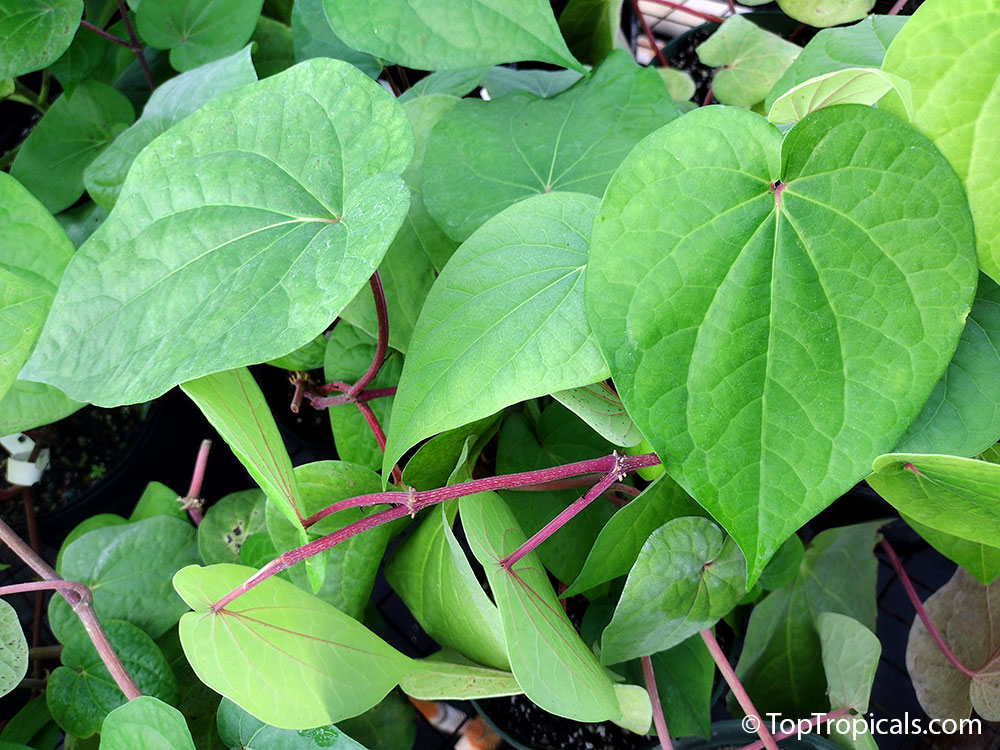
See more articles by Alex Butova

